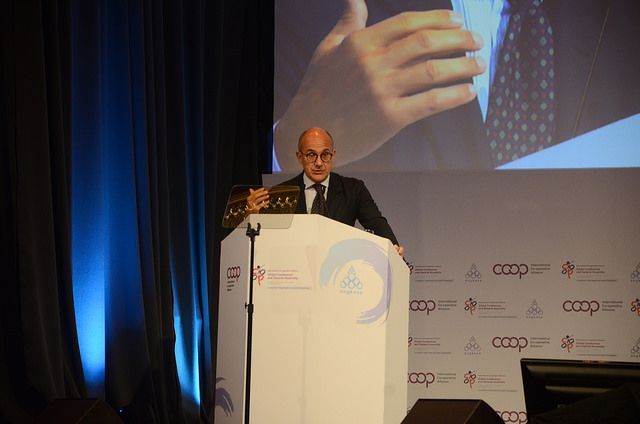
Kuala Lumpur, 16 November 2017 – The International Co-operative Alliance and Euricse, the European Research Institute on Cooperative and Social Enterprises, published today its sixth annual World Co-operative Monitor. The publication reports on the world’s largest co-operative and mutual organisations, providing a ranking of the Top 300 and sectorial analysis based on 2015 financial data. The 2017 World Co-operative Monitor collected data for 2,379 organisations from 8 sectors of activity, 1,436 of which had a turnover of more than USD100m. The Top 300 co-operatives and mutuals report a total turnover of 2,164.23 billion USD.
The world’s top 300 co-operatives operate in different sectors: insurance (41%), agriculture (30%), wholesale and retail trade (19%), banking and financial services (6%), industry and utilities (1%), health, education and social care (1%) and other services (1%).
Charles Gould, Director-General of the Alliance, said: “The World Co-operative Monitor is a project designed to collect robust economic, organisational, and social data about co-operatives, mutual organisations and non co-operative organisations controlled by co-operatives worldwide. It is the only report of its kind collecting annual quantitative data on the global co-operative movement.”

This year, the French banking group Crédit Agricole remains at the top of the top 300, followed by Kaiser Permanente and State Farm, two insurance businesses based in the USA.
Gianluca Salvatori, CEO of Euricse, said: “In addition to the rankings based on US Dollar, we have added this year rankings using the International Dollar as calculated by the World Bank. It gives us an idea of the purchasing power parity of the co-operative, helping to understand the relative size and removing possible distortions caused by currency conversion rates.”
New this year is the trend analysis on the top co-operatives and mutuals by sector of activity. The analysis shows the performance of the largest co-operatives and mutuals from 2011 to 2015 showing the strength and stability of the co-operative movement throughout the crisis when many shareholder business were suffering losses.
Another addition to this year’s report is the analysis of the capital structure of not only the Top 300 but also a sample of smaller co-operatives and mutuals, allowing for comparison of different types of co-operative business. The results of this research show that large co-operatives and mutuals do not have specific problems raising capital related to the co-operative business model, though smaller co-operatives do have some challenges mostly related to obtaining internal capital and long-term debt.
“The financial statement data of the Top 300 reveals a situation that does not support the traditional theory of co-operative capital”, concludes the report. “Rather, the analysis shows a sector with good capitalisation, in financial equilibrium and with sufficient profitability to support growth.” In their recommendations, the authors of the report add: “Given these results, for the large co-operatives a possible and important policy would be to stimulate, using the new internally generated capital resources as well, investments in research and development, i.e. in innovation.”
Photo: Gianluca Salvatore presenting the results of the monitor, (c) ANGKASA




